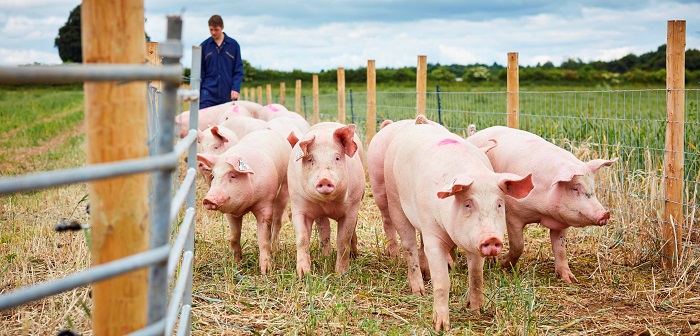Average income on specialist pig farms is forcecast to more than double to £57,000 in 2016/17 on the back of vastly improved pig prices.
The latest Defra Farm Business Income forecasts predict a 163% increase from the unsustainable average pig farm income £21,600 recorded in 2015/16, when the industry was shaken by a long period of low prices.
The pig sector recorded, by some distance, the biggest percentage rise among all sectors, although this is, of course, as much a reflection of what happened in 2015/16, as the situation in the current year.
The forecast rise is almost entirely due to firmer pigmeat prices driven by weaker sterling and tighter supplies. Prices have remained steady at about the 150p/kg mark in the early months of 2017, after a sustained increase from spring 2016.
Compared to the previous financial year, finished pig prices have been on average around 5% higher in 2016/17, although throughput has been slightly lower. Weaner, store and cull sow prices have also increased.
However, the full extent of these increases is not fully reflected in the forecasts shown here as contract rearers are well represented in the FBS sample of pig farms.
The business models for contract rearing operations are varied but it has been assumed that the enterprise output on these farms will not be impacted by the increase in pig prices.
Input costs on specialist pig farms are also expected to increase, particularly feed which represents a substantial proportion of their costs. This is assumed to track the increased value of key feed ingredients such as wheat and soya.
Other headline results included:
- A 7% rise in forecast cereal incomes to 38,000
- A 31% fall in poultry incomes to 74,000
- A 49% drop in dairy incomes to £22,500
- Increases in lowland and LFA grazing enterprises to £19,000 and £22,500 respectively.
The forecasts for 2016/17 are derived from information available in early February 2017 for prices, animal populations, marketings, crop areas, yields and input costs and are intended as a broad indication of how incomes for each farm type are expected to move compared with 2015/16. They are subject to a margin of error, while Defra also points out that there will be a wide range in income across farms around the average figures.




